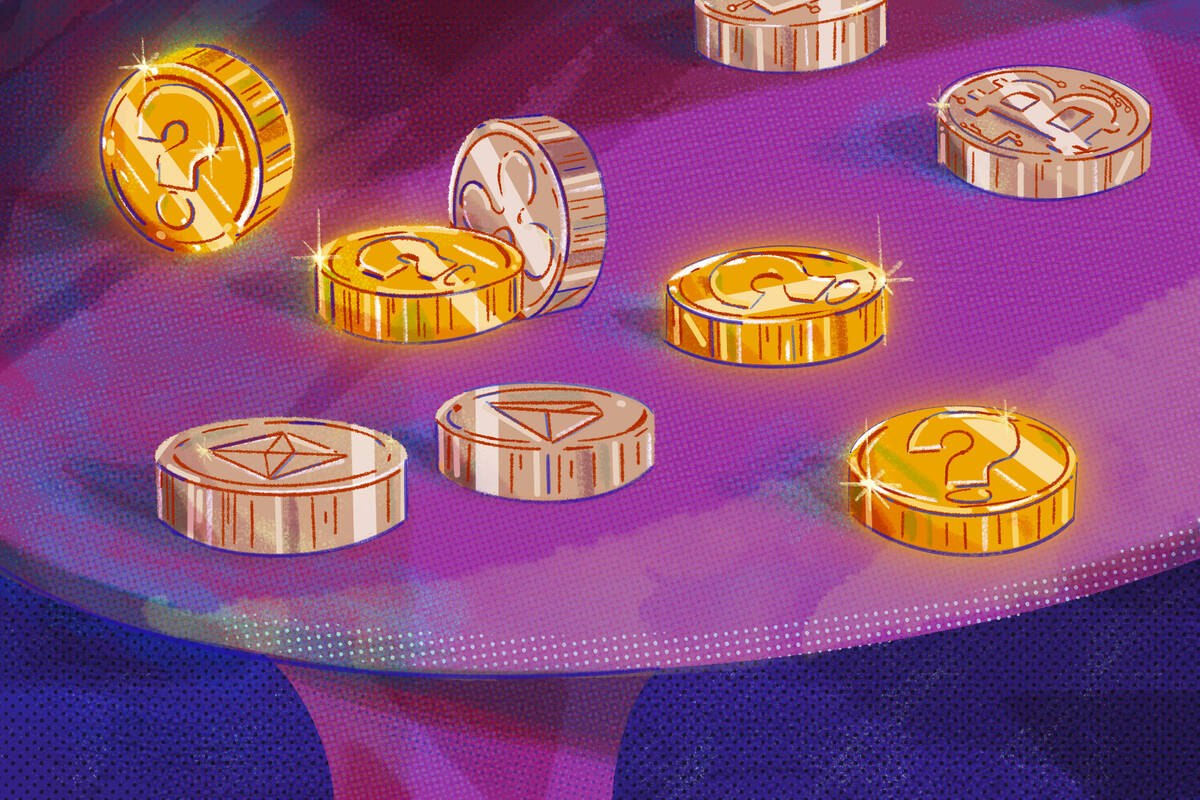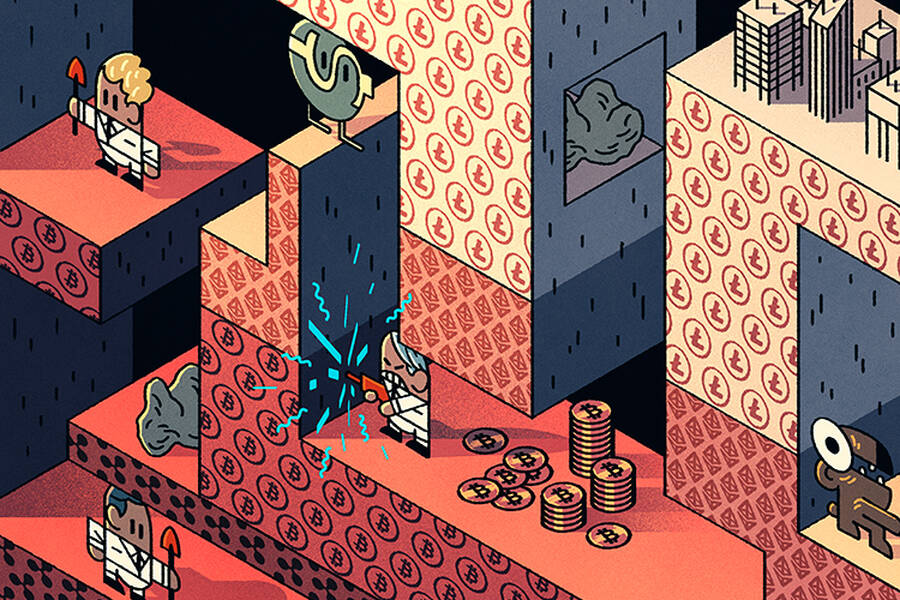Finance & Accounting Nov 3, 2023
Crypto Had a Brutal Year. What Comes Next?
“There’s definitely more caution now, which might not be a bad thing.”

Jesús Escudero
The year since the cryptocurrency exchange FTX filed for bankruptcy has seen what the industry has called a “crypto winter.” U.S. regulators, including the Securities and Exchange Commission, have certainly taken a frostier view of digital currency and have even brought charges against its two biggest (remaining) exchanges, Binance and Coinbase.
“What we’re seeing now, after years of ambiguity and delay, is some clarity from the SEC,” says Sarit Markovich, a clinical professor of strategy at the Kellogg School. “And what’s clear is that they’re not at all happy with the state of crypto.”
So what might we expect to emerge from this latest moment of reckoning?
For Markovich, the collapse of FTX and other exchanges was a costly wake-up call for an industry that lacked consumer awareness and transparency. And while she—unlike some others—thinks crypto is here to stay, she expects to see a strong push toward “DeFi,” or decentralized finance, where there’s less risk that a single actor or group of actors can crash an exchange or inflict staggering losses. In the meantime, both retail investors and fintech entrepreneurs will likely move at a more deliberate pace, given the risks and the prospect of more regulatory enforcement.
“There’s definitely more caution now, which might not be a bad thing,” says Markovich. “Before the fall of FTX, people weren’t very careful in terms of the risk involved in projects they were investing in or the level of transparency the project offered. Many of them are now entering back into the market, but they’re doing so with a little more awareness and caution.”
A win for DeFi?
That caution is certainly justified. The trial of Sam Bankman-Fried—one of the largest financial fraud cases in U.S. history—exposed just how dangerous the hype machine can be. FTX used customer deposits to invest in other companies, sponsor political ad campaigns, and purchase deluxe real estate.
But FTX was a centralized exchange, which some view as its primary flaw, because centralized exchanges tend to produce the same problems that the earliest crypto advocates were trying to solve in the first place. The whole idea behind bitcoin—and the blockchain it ran on—was to circumvent unreliable centralized institutions such as governments and banks, who could charge onerous fees or misappropriate funds or simply fail. Ethereum tried to expand on this, using a network of “smart” contracts to execute transactions.
With decentralized exchanges, on the other hand, at least theoretically you remove the need to trust a central authority with your money, whether it’s JP Morgan or Bernie Madoff—or Sam Bankman-Fried.
“When you give a small group too much control over other people’s money, that’s when things are going to fail,” Markovich says. “Fans of DeFi are actually saying, ‘Hey, we told you so.’”
So will “DeFi” become the future of crypto?
“Given all the uncertainty, it’s not exactly a bull market, but there’s definitely more trust now in decentralized exchanges,” she says.
One of the most popular is Uniswap. Launched in 2018, it allows users to swap cryptocurrencies directly using Ethereum-based smart contracts.
But it might not be for everyone. For those who are used to centralized exchanges like Binance or FTX, a DeFi exchange, or “DEX,” takes some getting used to. First, the typical interface is less user-friendly. There’s also the harrowing prospect of forgetting or losing the password that unlocks your digital wallet. Once it’s lost, you lose access to your crypto assets forever.
The final adoption barrier has to do with the nature of trading itself—or “swapping,” as the users of a DeFi exchange would call it. Because you’re swapping tokens instead of buying tokens, and because the value of digital tokens fluctuates with each transaction, there’s an element of uncertainty when you execute a “swap.” Effectively, the price you get depends on whether others were able to execute transactions ahead of you. It would be like swapping dollars for yen at the airport, only much murkier, and with the possibility that you might end up with fewer yen if someone “front-runs” your swap.
“When you give a small group too much control over other people’s money, that’s when things are going to fail. Fans of DeFi are actually saying, ‘Hey, we told you so.’”
—
Sarit Markovich
And although Markovich has done research that suggests this “slippage,” or the difference between the expected price and the actual price, is pretty close to the “spread” in centralized exchanges, it’s still a potential barrier. “Psychologically, it’s a concern. It would take some time for people to get comfortable with that.”
Yet it does appear that the industry’s energy and innovation is moving toward decentralized exchanges. This momentum is tempered somewhat by the need for fintech entrepreneurs to avoid the kinds of mistakes that brought down Luna, one of the major DeFi crypto projects that went bust last year, while finding a way to offer products and services that are both user-friendly and transparent.
Luna, the native blockchain token of Terra, crashed due to its connection to TerraUSD (UST), the Terra network’s algorithmic stablecoin. Unlike fiat-backed stablecoins, which are special cryptocurrencies backed by established national currencies such as the U.S. dollar, UST’s stability was derived from algorithms that linked its value to Luna. While some in the DeFi community were skeptical that an algorithm could keep UST stable, the huge hike in Luna’s token price attracted many to buy the token in the hope of high returns.
“I really do see this push toward more decentralization, and I think these projects will be more careful now with their algorithms. The fact that exchanges like Uniswap and MakeDao are still around and doing well—that builds a lot of confidence.”
A drop in VC investment
At the same time, there’s been a sharp decline in venture-capital funds for crypto firms and blockchain technology more generally.
“A lot of these startups know that it will be hard for them to raise funds, so they’ll only spend on bets that they feel very strongly about. Which means that innovation might slow down, but that could be a good thing, since some of the innovation was bad.”
It was certainly destructive. After last year’s dramatic losses across the entire industry, the overall crypto market is now valued at roughly a third of what it was in 2021.
The innovation that is moving forward is more focused on integrating crypto-based technologies into mainstream finance. Over the summer, Paypal launched a stablecoin backed by the U.S. dollar.
“I think you’ll see more and more of this kind of integration,” Markovich says. “Things are still progressing, just at a slower, more-careful pace.”
A showdown with the SEC
These firms have a reason to play it safe. The SEC has filed a number of lawsuits as part of its effort to regulate the industry. It claims Coinbase and others are “unregistered securities.”
“What’s interesting is that firms are actually winning these cases,” Markovich says.
In August, Grayscale won the right to create a Bitcoin exchange-traded fund. In September, Uniswap won a potentially precedent-setting case over fraud on DeFi exchanges. That was good news for Coinbase, because it showed there might be a limit to applying existing securities laws to crypto products and services.
But Markovich says the industry still has work to do in clarifying their platforms and protocols, so that more crypto assets can be given the stamp of legitimacy.
Following the fall of FTX, Binance started to provide what they call “proof of reserve” to help users feel more confident that it held the funds to back its assets. Coinbase is a public company, with all the regulation and transparency that comes with it. Still, there is a lot of discussion about the best way to prove that exchanges are holding the required reserves.
“I think that what Coinbase is trying to do is great,” Markovich says. “They’ve been working with the regulators and educating the market. Which is ironic, because that’s what Bankman-Fried was trying to do. It can only work if the companies are honest and transparent. But I think that that’s the best thing that can happen to the crypto market.”
Andrew Warren is a writer based in Southern California.



